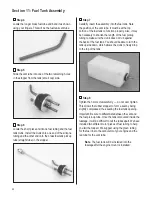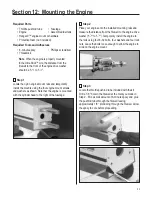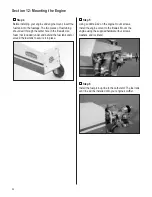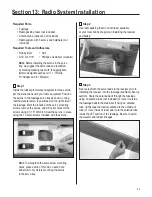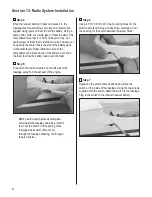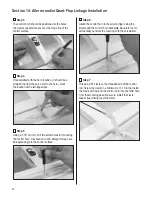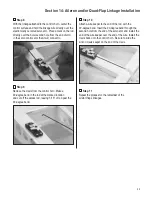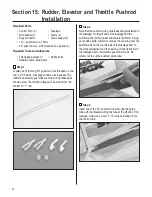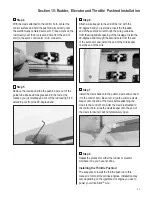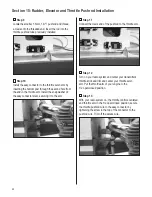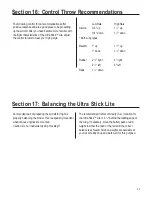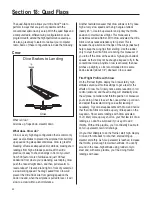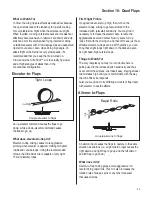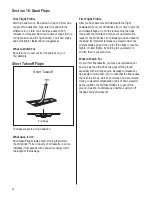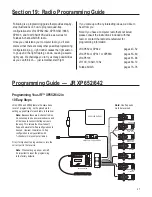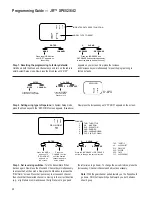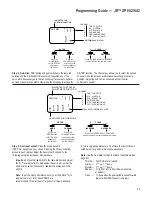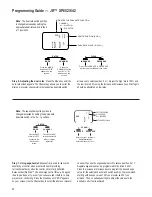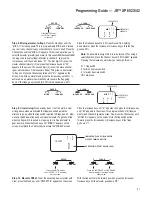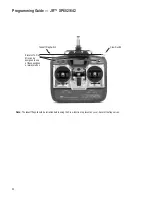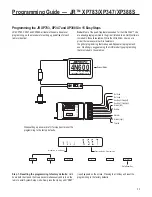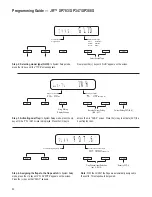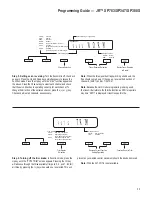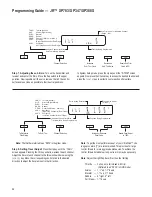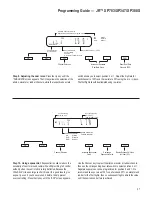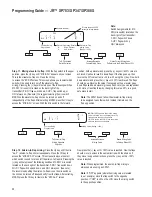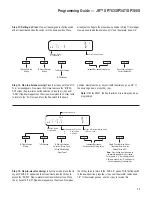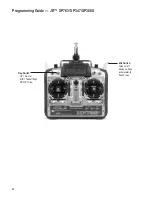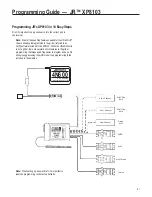
46
Section 18: Quad Flaps
First Flight Profile
Start high and turn on the aileron-to-flap mix. Now do a
couple of full-deflection, high-rate rolls and note the
difference in roll rate. You should see about a 30%
increase in roll speed. Now try a couple of snaps (full up,
full right aileron and full right rudder). You’ll find snaps
and spins tighter, faster and more aggressive.
What to Watch For
Be careful not to over-control the ailerons on your
first attempts.
Short Takeoff Flaps
The flaps are set to a down position.
What does it do?
Short takeoff flaps create a high-lift wing that allows
the Ultra Stick™ Lite to do very short takeoffs, in some
instances (from asphalt with a powerful engine) within
the length of the fuselage.
Full flaps
Short Takeoff
First Flight Profile
After you have become comfortable with the flight
characteristics of your Ultra Stick Lite, it’s time to give the
short takeoff flaps a try. On the runway drop the flaps,
then punch the throttle and hold some up elevator. Be
ready for the Ultra Stick Lite to break ground and head for
the skies! It’s important to release up elevator when the
airplane breaks ground, then turn off the flaps to resume
flights. On later flights, try holding full up elevator to
shorten the roll out even more.
What to Watch For
On your first flap takeoffs, you may be surprised at just
how quickly the Ultra Stick Lite pops off the ground,
especially with a strong engine. Be ready to release any
up elevator quickly. Also, you’ll notice that the flap causes
the nose to pitch up a bit. We normally don’t recommend
mixing in elevator compensation (a bit of down elevator),
as the intention of short takeoff flaps is to get off the
ground in as short a distance as possible. Just turn off
the flap shortly after takeoff.

